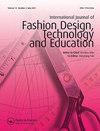零售技术对线上和线下的接受模型(O@O):比较不同世代的数据分析技术
IF 2.2
Q3 BUSINESS
International Journal of Fashion Design, Technology and Education
Pub Date : 2022-05-26
DOI:10.1080/17543266.2022.2078892
引用次数: 1
摘要
本研究的目的是通过扩展技术接受模型来检验消费者使用零售技术的意愿,并找出影响他们决策的因素。本研究采用回归和偏最小二乘结构方程模型对所提出模型中的相同结构进行检验,并对结果进行比较,找出异同。结果表明,根据消费者的购物取向,他们对一种技术的评价是不同的。此外,根据技术类型的不同,显著影响消费者使用意愿的因素也不同。对于一项不熟悉的技术,消费者在确认其使用意愿之前需要进行评价(即评价在消费者形象与使用意愿之间的中介作用)。与之前的研究相反,并非所有技术都需要高有用性才能高意图使用。对于新建立的模型,PLS-SEM分析比回归分析更合适。本文章由计算机程序翻译,如有差异,请以英文原文为准。
Retail Technology Acceptance Model for online at offline (O@O): Comparing different generations of data analysis techniques
ABSTRACT The purpose of this study is to examine consumers’ intentions to use retail technologies and to identify factors that affect their decision by extending the Technology Acceptance Model. This study employs Regression and Partial Least Squares Structural Equation Modeling to test the same construct in the proposed model, and the results were compared to find out similarities and differences. The result shows that depending on the consumers’ shopping orientation profile, they evaluated a technology differently. Also, depending on the types of technology, the factors that significantly affect consumers’ intentions to use are different. For an unfamiliar technology, consumers need to evaluate before confirming their intention to use (i.e. the mediating effect of evaluation between consumer’s profile and intention to use). Not all technologies require high usefulness for high intention to use, contrary to previous research. The PLS-SEM analysis was more appropriate than the regression for a newly developed model.
求助全文
通过发布文献求助,成功后即可免费获取论文全文。
去求助
来源期刊

International Journal of Fashion Design, Technology and Education
Arts and Humanities-Visual Arts and Performing Arts
CiteScore
3.10
自引率
0.00%
发文量
36
 求助内容:
求助内容: 应助结果提醒方式:
应助结果提醒方式:


